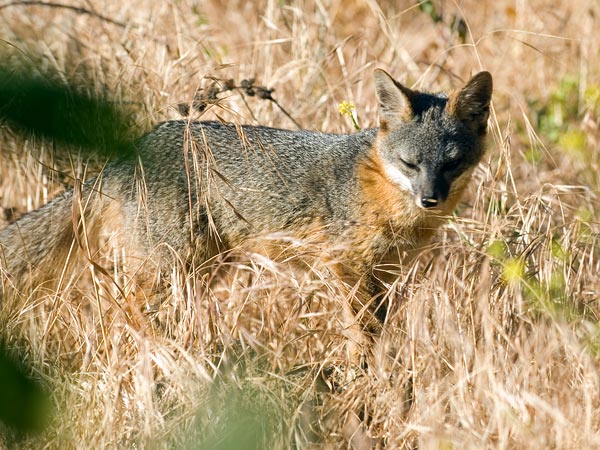'Dwarf' foxes, saved from extinction, make an incredible recovery (Photos)
In the past Dwarf Island foxes (who are smaller than the average house cat) flourished on the California Channel Islands up until the mid 1990's. Before this time they had numbered in the thousands but quickly dropped to just over a dozen in some places. It was at this point that they were classified as a 'critically endangered' species soon to be extinct.
But no one counted on the resilience of these tiny creatures and the intervention of the National Park Service officials and those of the Nature Conservancy. Now, after just a few short years of incredibly well-executed conservation tactics, biologists say that the little fox has made one of the fastest recoveries of any animal in the history of the Endangered Species Act.
But the re-population of the Dwarf Island fox began with a tragic lesson in the interconnectivity of nature. Man was of course the first link in chain of destruction of the island's ecosystem. Bald eagles were once common along the Channel Islands, feeding mostly on fish while the foxes feasted on insects, birds, and other land mammals. But it was the exposure to the now-banned insecticide DDT, which had washed into the ocean and contaminated their diet, that caused the bald eagles to die off.
In their place came the golden eagle from the mainland which feasted on an increasing number of feral pigs. Although the golden eagles were well fed, they soon also developed a taste for the little foxes. This was as biologists described it as "a perfect storm of events" which might have ended the island foxes for good.
The population declines were astounding as the foxes on Santa Rosa Island, for example, which numbered 1,500 in 1994, were reduced to just 15 individuals by the year 2000. By the year 2004, the foxes were added to the Federal Endangered Species List.
It was at this point when the National Park Service and the Nature Conservancy stepped in, with a multi-faceted plan to hold off the fox's seemingly inevitable extinction. Hunters were hired to thin the number of grazing sheep and feral pigs. At the same time wildlife officers set about capturing the golden eagles and relocating them to the mainland.
By 2006, officials had captured the final two golden eagles. "The last golden eagle pair was really tricky to get because they had seen all their buddies get captured," says Christie Boser of the Nature Conservancy. During this time, several captive-breeding programs were also established to boost the island fox populations. After the capture of the last of the golden eagles, bald eagles were reintroduced to the islands in their place.
By eliminating those threats, biologists had expected the island foxes to regain their footing, but they had no idea just how quickly they would recover. After hitting a low of just 15, there are now 600 foxes on Santa Rosa Island, 500 foxes now on San Miguel Island, and a whopping 1,300 on Santa Cruz Island.
According to National Park Service biologist, Timothy Coonan, "It's a strange thing. The official recovery plan has not even been finalized [by the U.S. Fish and Wildlife Service], and yet these populations are doing so well that they can come off the Endangered Species List."
He added that after reaching declines of 95 percent just a decade or so ago, the fox population today has nearly recovered - "population trend and annual survival are currently monitored to ensure that recovery proceeds apace and future threats to the park's island fox subspecies are identified."
This success story serves as a living testimony as to what is possible when we work in harmony with nature. Although nature can be fragile it is also so incredibly resilient but man must never forget this lesson.







That makes me feel happy! I wish that more endangered species would rebound like that!
I adore them. So cute and beautifull.